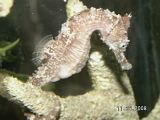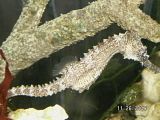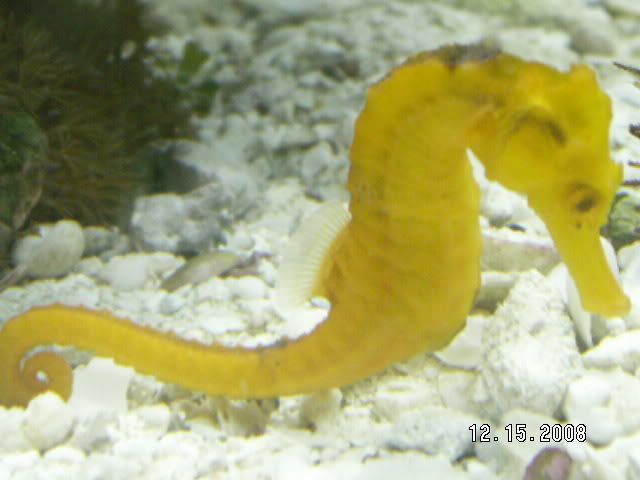Hi there.
It's great to see you doing homework and research before jumping in - I'm sure your horses will be very well cared for.
Here's something I cut and pasted by someone who's been into seahorses a LOT longer than me:
"it's simply a matter of putting a fish into a tank that's too small...if you're given food and water, you could live in a phone booth, but i don't think you'd thrive, not to mention the waste buildup.
SH present a rather heavy bioload on a system, so you need enuff water volume to handle it.
SH appreciate stable temps and chemical water parameters. again, the more water you have, the more stable and less stressful the system will be.
beside using the horizontal room in a tank, SH are "vertically oriented" fish...they'll use all of this space in their day-to-day swimming, and ESPECIALLY if they're mating. if they don't have enuff space to complete their coital spins, there may never be an egg transfer, especially with an inexperienced pair. the rule of thumb here is to provide a tank that's as close to 3x the uncurled height of the SH to be kept. actually, even the larger PNP's are bit shallow, but they're close enuff in most cases."
Regarding filtration, get the best you can - they need really clean water. I have a Fluval 405 on my 46 gallon horse tank, as well as lots of live rock, live sand, and a protein skimmer.
Horses don't require any special lighting - anything is fine. I'm currently upgrading the lights on my horse tank just so the tank will look nicer, but it's not necessary for the well being of the horses.
I don't know much about corals for horses - I'm still pretty new myself. I have macro algae in their tank and they love hanging onto that. They also hang onto my feather dusters and most of the live rock - I hand picked pieces that had built-in hitching posts.
I feed mine frozen mysis shrimp - it's the brand that is already fortified with vitamins and other good stuff. I don't think food has any affect on the horses color, but their health and mood does. They'll also change colors when they are doing their mating game and breeding, etc.
Regarding sexing them, the males have a more subtle curve to their
belly/pouch area whereas the females have a belly that ends abruptly.
I'll go get some photos and post them in a few minutes . . .











